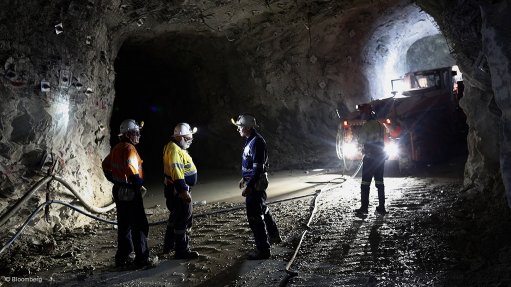
UNDER CONSIDERATION PEC Consulting can help its clients identify all the aspects that have to be considered when planning to expand an underground or surface operation
An effective mining feasibility study must provide not only the results of a geological evaluation or the development of mine plans, but also an analysis of the market and the fundamental economics of a project, says provider of upfront studies for the minerals industry PEC Consulting.
Therefore, such a study must confirm the quality and availability of raw materials required for a viable project, while also providing capital cost and operational cost estimates, PEC Consulting senior mining consultant Len Dolby tells Mining Weekly.
“During the feasibility stage of a project, in addition to geological and mining estimates, other important aspects may be considered, including processing requirements, transportation and logistics, water and energy supply,” he explains, adding that this stage also includes an assessment of local social and political issues, as well as compliance with environmental laws and regulations.
Dolby says PEC Consulting’s thorough review process ensures that clients receive a high-quality service, adding that the company promotes a team environment, where the contributions of each consultant are valued and given consideration.
“The planning and organising of all the activities associated with the project come into play, with the project manager. . . using established procedures and protocols to achieve project goals and objectives.”
When conducting a feasibility study, PEC Consulting reviews the key drivers supporting the basis of a project, regardless of project size, and validates the primary assumptions and final results to determine if a project is viable and if further work is justified, says Dolby, adding that it is important to convey an honest assessment of the project to clients.
The economic analysis of a project includes aspects such as a cash flow analysis and a return on investment optimisation analysis; the financial analysis identifies available financing options and a listing of financial institutions that could support the project loan, he explains.
He adds that PEC Consulting also seeks cost reductions and production enhancements to improve a project’s financials.
Additional Expertise
PEC Consulting also has expertise in assisting in mergers and acquisitions, says Dolby.
“We can assist buyers and sellers by providing professional guidance on mergers and acquisitions to identify significant considerations such as operational synergies, upside and downside risks, and financial benefits.”
Meanwhile, PEC Consulting also specialises in technical due diligence reviews and can provide a comprehensive audit of an operation’s assets.
Dolby says all the data on the deposit, including exploration data, geology, geotechnical and hydrogeological studies, are reviewed to identify the potential impacts of mining.
PEC Consulting can further assess if a project’s assets are in the required condition to obtain desired production and achieve the design performance of the mine or plant; the mineral deposits are available to support divested assets, such as coal, limestone and aggregate deposits; the assets have a competitive level of availability and provide reliability of supply; and the maintenance programmes are in place and can effectively support industry best practices; PEC consulting can also assess the degree of obsolescence of main equipment, he says.
“At the conclusion of the review process, a report is compiled, covering the findings and providing a professional opinion on the technical aspects of the assets studied,” explains Dolby.
He says PEC Consulting can help clients identify all the aspects that have to be considered when considering an expansion of a surface or underground mining operation.
“This includes a review or guidance on the selection of mobile equipment, mine layout, materials handling upgrades, processing considerations, impacts on logistics at higher production rates, the identification of potential bottlenecks, management and labour needs, and even health and safety considerations.”
In addition, the planned sequence of the mining of reserves and civil plans, such as road designs, water management and power needs, are also reviewed.
“. . . [We] can even include project enhancement exercises, such as pit optimisation, a ‘what-if’ analysis and a net present value optimisation,“ Dolby concludes.